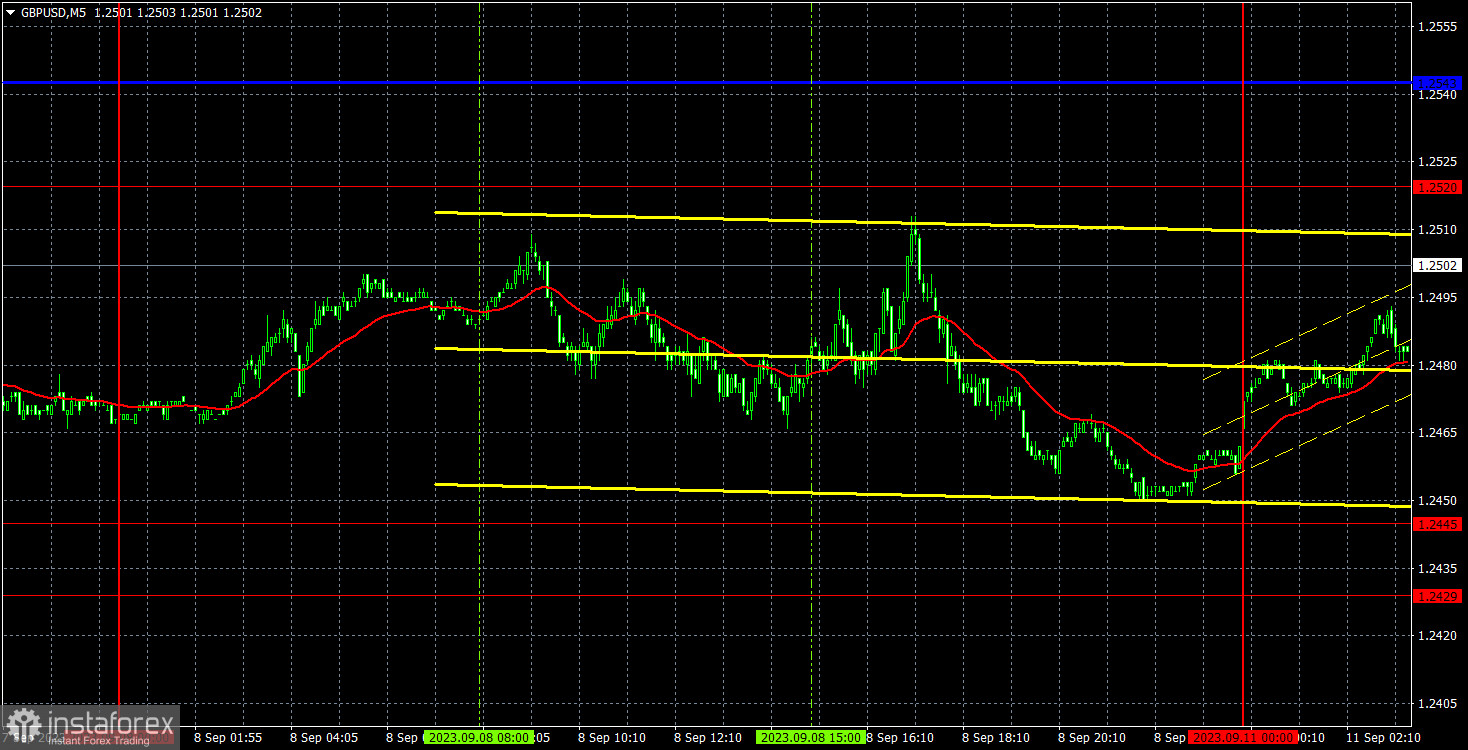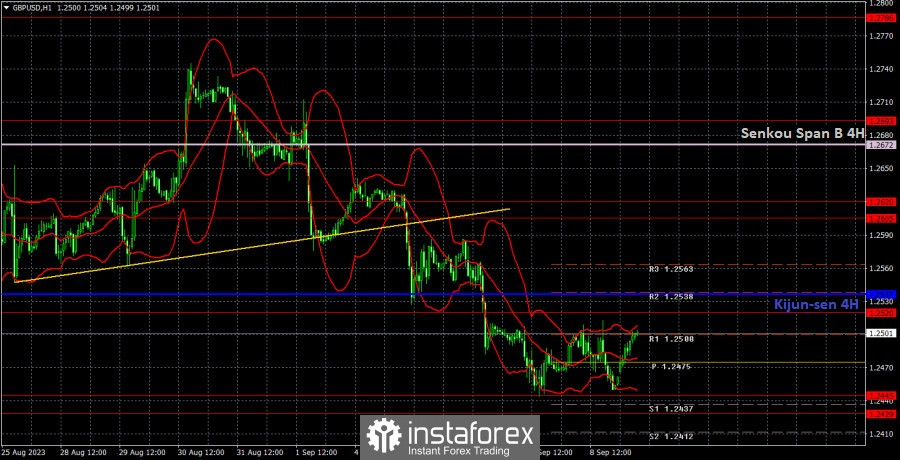Analysis of GBP/USD 5M

On Friday, GBP/USD traded with low volatility and a slight bearish bias. By the end of the day, the British pound edged down, while the euro slightly appreciated. However, since both currency pairs experienced volatility of 50-60 pips, these movements can be considered simply market noise. They do not carry any significant meaning. The downtrend persists, and the pound doesn't have any reason to rise. Therefore, it can only wait for either a technical correction or a strong fundamental catalyst. We believe in the possibility of a correction, but we do not see a strong fundamental backdrop. The Bank of England is also signaling its readiness to soften its monetary stance, which could exert more pressure on the pound.
There were no trading signals on Friday. The price approached the level of 1.2520 twice, but the fact that it can't reach this mark means that it isn't just a "signal with a margin of error." Therefore, traders should not have opened any trades on Friday. In any case, it wouldn't make any sense since volatility was low.
COT report:

According to the latest report, the non-commercial group of traders closed 900 long positions and opened 9,800 short ones. Thus, the net position of non-commercial traders decreased by 10,700 positions in a week. The net position has been steadily growing over the past 11 months as well as the pound sterling. Now, the net position has advanced markedly. This is why the pair will hardly maintain its bullish momentum. I believe that a long and protracted downward movement should begin. COT reports signal a slight growth of the British currency but it will not be able to rise in the long term. There are no drivers for opening new long positions. Sell signals are starting to appear on the 4-hour and 24-hour charts.
The British currency has already grown by a total of 2,800 pips, from its absolute lows reached last year, which is a significant increase. Without a downward correction, the continuation of the uptrend will be illogical. We are not against the uptrend; we just believe a solid correction is needed first. The market perceives the fundamental background one-sidedly, ignoring any data in favor of the dollar. The Non-commercial group of traders has a total of 97,000 long positions and 48,700 short ones. I remain skeptical about the long-term growth of the pound sterling, and the market has recently started to pay more attention to selling.
Analysis of GBP/USD 1H

On the 1H chart, GBP/USD has settled below the ascending trendline, which shows that the pair may extend its downward movement. The price is also below the Ichimoku indicator lines. The downward movement can be somewhat erratic amid the weak fundamental background. The pound is expected to fall, but it is gradually doing so. Fortunately, there is plenty of time.
On September 11, traders should pay attention to the following key levels: 1.2269, 1.2349, 1.2429-1.2445, 1.2520, 1.2605-1.2620, 1.2693, 1.2786, 1.2863. The Senkou Span B (1.2672) and Kijun-sen (1.2537) lines can also be sources of signals, e.g. rebounds and breakout of these levels and lines. It is recommended to set the Stop Loss orders at the breakeven level when the price moves in the right direction by 20 pips. The lines of the Ichimoku indicator can move during the day, which should be taken into account when determining trading signals. There are support and resistance levels that can be used to lock in profits.
Bank of England Chief Economist Huw Pill speaks today. He already made dovish statements last week so if history repeats itself, the pound will have even fewer reasons to rise.
Description of the chart:
Support and resistance levels are thick red lines near which the trend may end. They do not provide trading signals;
The Kijun-sen and Senkou Span B lines are the lines of the Ichimoku indicator, plotted to the 1H timeframe from the 4H one. They provide trading signals;
Extreme levels are thin red lines from which the price bounced earlier. They provide trading signals;
Yellow lines are trend lines, trend channels, and any other technical patterns;
Indicator 1 on the COT charts is the net position size for each category of traders;
Indicator 2 on the COT charts is the net position size for the Non-commercial group.
 English
English 
 Русский
Русский Bahasa Indonesia
Bahasa Indonesia Bahasa Malay
Bahasa Malay ไทย
ไทย Español
Español Deutsch
Deutsch Български
Български Français
Français Tiếng Việt
Tiếng Việt 中文
中文 বাংলা
বাংলা हिन्दी
हिन्दी Čeština
Čeština Українська
Українська Română
Română

